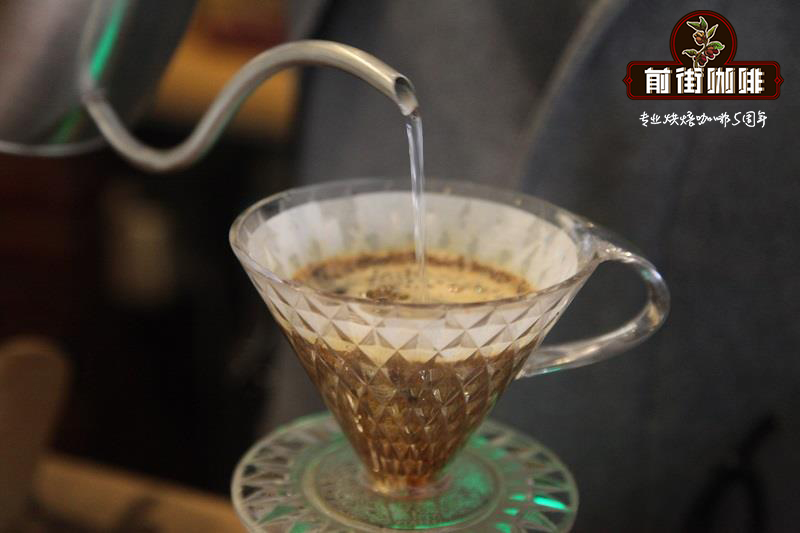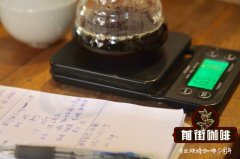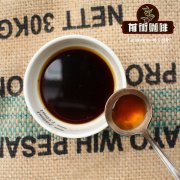Steps of washing beans and making coffee at Angina Manor in Colombia _ how to make coffee powder by hand

Professional coffee knowledge exchange more coffee bean information please follow the coffee workshop (Wechat official account cafe_style)
Colombian Coffee Angelina Manor washing
Colombia Colombia
Colombian coffee has clearly defined growing areas and a wide variety of impressive coffees they produce. Whether you want round, heavy coffee, refreshing, fruit-flavored (or somewhere in between), Columbia beans are most likely. Colombia is divided by geographical location, and it is not difficult to find that the coffee there has many common characteristics. If you like coffee in one area, other areas will like it as well. Coffee trees get double cropping in Colombia, the second main harvest and harvest each year, which is called "mitaca" locally.
CAUCA
CAUCA Cauca, best known for its coffee cultivation around Inza and Meseta de Popayan in Popayan, provides favorable growth conditions at high altitudes on the plateau and near the equator and surrounding mountains, which protects coffee from Pacific humidity and southern trade winds. This creates a very stable climate all the year round. In addition, coffee in the area has significant volcanic soil. According to historical records, there is a single rainy season from October to December every year.
Altitude: 1700-2100m
Harvest: March-June (major crops), November-December (mitaca crops)
Local coffee farmers grow coffee along the highlands of these mountains, with diverse climatic production conditions, and because of changes in altitude, a large part of Colombia's coffee industry is produced by small farmers. Surrounded by high mountains, the majestic mountains block the air and water vapor from the Pacific Ocean and trade winds from the south, thus maintaining a stable climate in the producing areas. Near the equator, there is plenty of sunshine. The stable climate and sufficient sunshine provide a guarantee for the stability of coffee quality.
How to make Colombian Coffee [Angina Manor]?
Qianjie Coffee hand reference: weigh 15g [Angelina Manor] coffee powder, pour into the grinder for medium grinding, the finished particles are slightly thicker than salt, we use BG bean mill to scale 5R (standard sieve pass rate 60%), water temperature 89 degrees, V60 filter cup extraction, recommended powder / water ratio around 1:15.
The hot water in the hand flushing pot draws a circle clockwise with the center of the filter cup. Start the time when brewing, brew the coffee to 30g in 15 seconds, then stop the water injection, and when the time is up to 1 minute, the second water injection. The second water injection is the same as before, draw a circle clockwise with the center of the filter cup, and the water flow should not rush to the place where the coffee powder is connected with the filter paper, so as not to produce channel effect.
Coffee powder to the outermost circle to set aside a circle, and then another circle to the middle, 2 minutes 20 seconds, to the coffee to 220g, brewing coffee is finished.
| Japanese Ice hand Chong [Angina Manor]
Front Street Coffee Ice hands make [Angina Manor] reference:
Colombian Coffee [Angelina Manor], light and medium roasted, BG bean grinder scale 5m (standard sieve pass rate 67%)
20 grams of powder, 150 grams of ice, 150 grams of hot water. The water temperature is 90 ℃ higher than the recommended normal hand flush, then 1 ℃ higher, the normal grinding small Fuji 3.5 scale, the ice hand flushing is slightly smaller than half a grid-small Fuji 3 scale, the recommended powder (water + ice) ratio is 1:15.
The amount of steaming water is 40 grams and the steaming time is 30 seconds.
Water injection by stages, 60 grams of water in the first section and 40 grams of water in the second section. Use a thin but high water injection column and stir hard to make the coffee powder fully tumble, but be careful that the water level is not too high and do not rush to the edge of the filter paper.
The whole extraction time is about two and a half minutes (close to the normal extraction time of 20 grams of powder).
END
Important Notice :
前街咖啡 FrontStreet Coffee has moved to new addredd:
FrontStreet Coffee Address: 315,Donghua East Road,GuangZhou
Tel:020 38364473
- Prev

Malawi Sable Farm introduces the characteristics of Malawian pea berries coffee
Attention Coffee Workshop (Wechat official account cafe_style) Coffee has been grown in Malawi, a small country in the southeast of Africa, for nearly 100 years, but due to years of lack of cooperative organizations, this crude production has not yet been considered a country producing high quality coffee. Until recently. In 2007, Mzuzu Coffee Growers Cooperative Union
- Next

What are the characteristics of Burundian Ngozi NGOZI coffee? How do you drink Starbucks Burundian coffee?
Professional coffee knowledge exchange more information about coffee beans Please follow Coffee Workshop (Wechat official account cafe_style) Burundi may not be the leader in the global coffee market, but it is trying to improve its productivity. Coffee cultivation in Burundi is affected by the political and social problems encountered by its neighbour Congo. It mainly affects the future sustainability of the market. In a
Related
- Detailed explanation of Jadeite planting Land in Panamanian Jadeite Manor introduction to the grading system of Jadeite competitive bidding, Red bid, Green bid and Rose Summer
- Story of Coffee planting in Brenka region of Costa Rica Stonehenge Manor anaerobic heavy honey treatment of flavor mouth
- What's on the barrel of Blue Mountain Coffee beans?
- Can American coffee also pull flowers? How to use hot American style to pull out a good-looking pattern?
- Can you make a cold extract with coffee beans? What is the right proportion for cold-extracted coffee formula?
- Indonesian PWN Gold Mandrine Coffee Origin Features Flavor How to Chong? Mandolin coffee is American.
- A brief introduction to the flavor characteristics of Brazilian yellow bourbon coffee beans
- What is the effect of different water quality on the flavor of cold-extracted coffee? What kind of water is best for brewing coffee?
- Why do you think of Rose Summer whenever you mention Panamanian coffee?
- Introduction to the characteristics of authentic blue mountain coffee bean producing areas? What is the CIB Coffee Authority in Jamaica?

